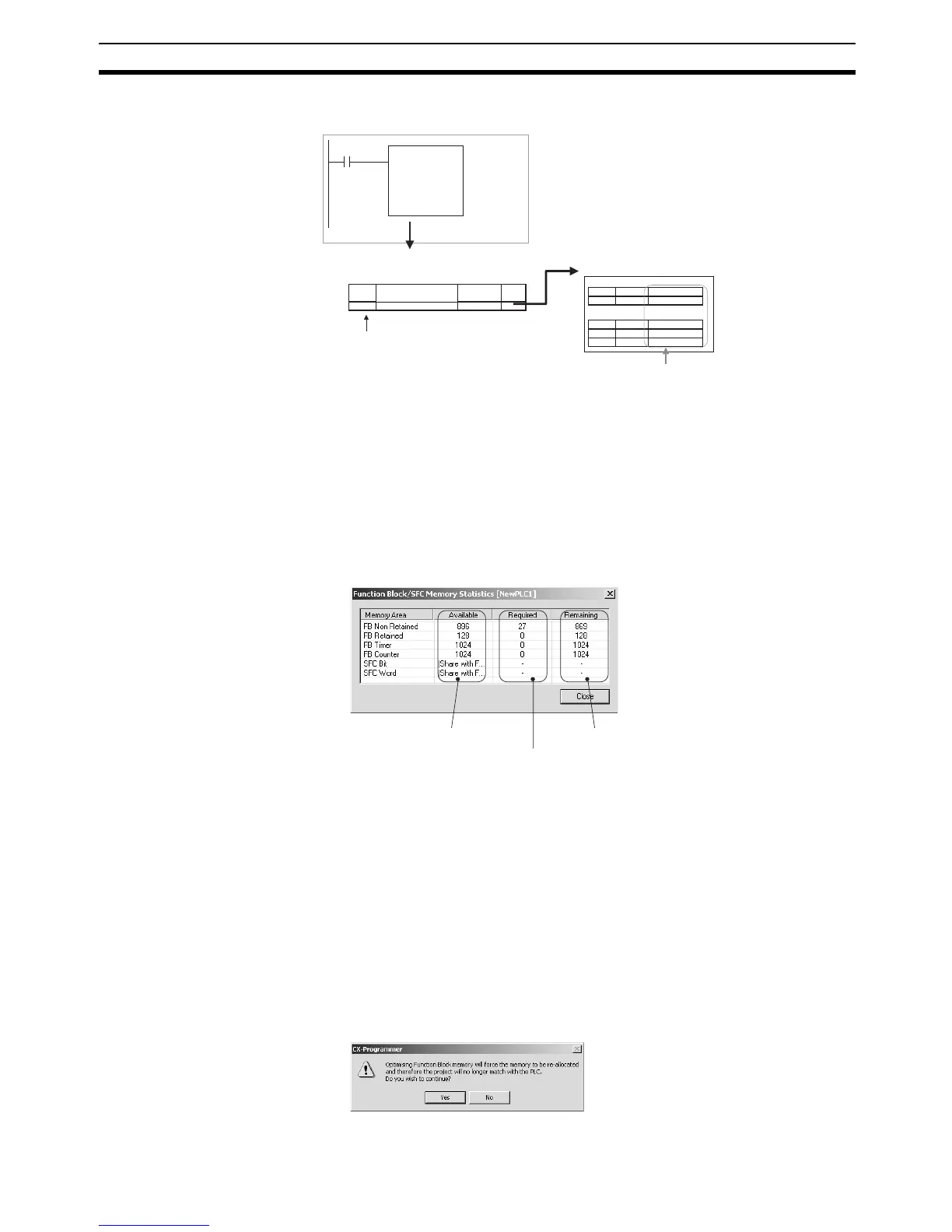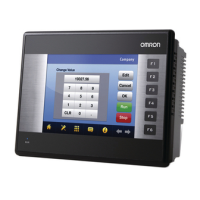105
Procedures Section 3-2
Method Used for Checking Addresses Internally Allocated to Variables
Checking the Status of
Addresses Internally
Allocated to Variables
The following procedure can be used to check the number of addresses allo-
cated to variables and the number still available for allocation in the function
block instance areas.
1,2,3... 1. Select the instance in the Ladder Section Window, right-click, and select
Memory Allocation - Function Block/SFC Memory - Function
Block/SFC Memory Statistics from the PLC Menu.
2. The Function Block/SFC Memory Statistics Dialog Box will be displayed as
shown below. Check address usage here.
Optimizing Function
Memory
When a variable is added or deleted, addresses are automatically re-allocated
in the variables’ instance area. Consecutive addresses are required for each
instance, so all of the variables will be allocated to a different block of
addresses if the original block of addresses cannot accommodate the change
in variables. This will result in an unused block of addresses. The following
procedure can be used to eliminate the unused areas in memory so that
memory is used more efficiently.
1,2,3... 1. Select the instance in the Ladder Section Window, right-click, and select
Memory Allocation - Function Block/SFC Memory - Optimize Func-
tion/SFC Memory from the PLC Menu.
The following dialog box will be displayed.
ab
c
sample FB [FunctionBlock1] N/A [Auto]
a BOOL W400.00
b BOOL W401.00
c BOOL W401.02
Instance registered in global
symbol table under instance name.
Name
Address/
Value
Ty pe
Name
Address
Ty pe
Name
AddressTy pe
Inputs
Outputs
FM Instance Memory Dialog Box
Instance name
Addresses used for function
block internal variables
Right-click and select Function
Block Memory Address.
Instance of function block definition A,
instance name: sample
Program
The total number
of words in each
interface area.
The number
of words
already used.
The number of
words still available.
